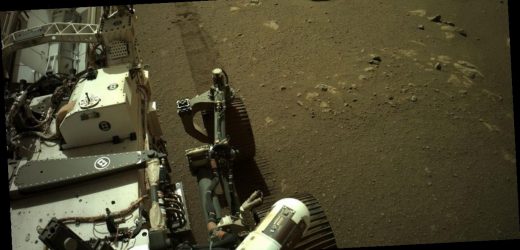- Microphones on NASA’s Perseverance rover have recorded sounds of it driving on Mars.
- Perseverance has also sent back audio of a Martian breeze and of its lasers vaporizing rocks.
- The rover’s mics will keep collecting and transmitting audio over its two-year mission.
- See more stories on Insider’s business page.
NASA’s Perseverance rover has started taking joy rides on Mars — and recording what those drives sound like.
The agency released a 16-minute audio clip on Wednesday in which Perseverance’s wheels can be heard crunching over the Martian surface. The sounds aren’t pleasant. Odd scratching noises can be heard on the recording as the rover shakes, rattles, and rolls through the Jezero Crater.
According to Vandi Verma, a senior NASA engineer and rover driver, some of the bangs and screeches can be chalked up to Perseverance’s metal wheels.
“When you’re driving with these wheels on rocks, it’s actually very noisy,” she said in a press release.
NASA scientists think the scratching noises could either come from electromagnetic interference from one of the rover’s other instruments, or just road noise as the rover’s wheels and suspension do their jobs.
“If I heard these sounds driving my car, I’d pull over and call for a tow,” Dave Gruel, NASA’s lead engineer for Perseverance’s camera and microphone systems, said in the release. “But if you take a minute to consider what you’re hearing and where it was recorded, it makes perfect sense.”
Here’s a 90-second audio clip of highlights from a 90-foot drive Perseverance took on March 7.
Audio of Martian wind and rock-vaporizing lasers
These aren’t the first sounds Perseverance has beamed back to Earth.
A few days after it landed on February 18, the rover captured sounds of a Martian breeze. The clip was the first audio recording scientists had ever collected from Mars’ surface.
Engineers equipped Perseverance with two microphones. The Entry Descent and Landing (EDL) Cam microphone is the one that recorded the rover’s driving sounds. The mic was primarily meant to record sounds from the landing, but it failed to do so. The second microphone is attached to the rover’s SuperCam instrument and was designed to collect audio of Perseverance’s lasers zapping Martian rocks.
Last week the SuperCam mic recorded audio of 30 such laser impacts. The staccato pops on the recording below are the sound of the laser vaporizing rocks.
By having the rover zap the Martian surface in this way, scientists can learn more about how hard Martian rocks are and what they’re made of.
According to Gruel, both microphones will continue collecting audio during the rest of the rover’s mission. The robot is poised to spend the next two years scouring the Jezero Crater for signs of ancient alien life and collecting rock samples.
Perseverance is NASA’s fifth and most sophisticated Mars rover. The agency previously equipped two Martian spacecraft with microphones: the Mars Polar Lander and the Phoenix lander. But the mic on the former failed, and the latter never turned on its microphone.
NASA’s InSight lander, which touched down on Mars in 2018, also enabled scientists to listen to the Martian wind, but in a different way. The lander is equipped with a seismometer to study Mars quakes, so the tool can sense vibrations that wind causes as it gusts across InSight’s solar panels.
The low-pitch sounds of these vibrations are audible to the human ear.
Source: Read Full Article


